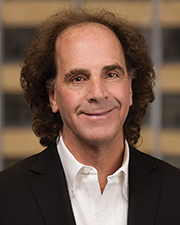Transforming retail centers into mixed-use developments with a multifamily component - by Rick Birdoff

Since March, the economic impact of COVID-19 continues to unfold globally. We’ve never experienced a world like 2020 and if one thing’s for certain, the rapid pace at which the pandemic has spread and global actions to curtail it are having lasting reverberations on the way we live and do business. Over the past few months, we’ve seen a retail climate that’s changing now more than ever. Well-known brands have been forced to close their doors or move to an all e-commerce platform as foot traffic decreases, leaving landlords with empty spaces to fill. The negative impacts of COVID-19 in the retail industry have been impactful, but have also given landlords an opportunity to reconsider a property’s highest and best use. Developers and owners of retail centers should be using this time to reevaluate their portfolio to determine if a mixed-use development with a residential component would better suit the evolving community.
Mixed-use centers are not a new phenomenon but have become increasingly popular over the last several years as the live, play, shop mindset is at the forefront of many consumers. A recent “Emerging Trends in Real Estate” study published in partnership by PwC and the Urban Land Institute indicated that transforming traditional retail centers to mixed-use developments, specifically in suburban areas looking to increase their millennial population, is a great option to best optimize the space. By reducing dependency on traditional shopping center retailers like big-box stores or apparel shops, developers can make room for alternative uses like entertainment facilities, food hall concepts, and multifamily offerings. Implementing a diverse tenant mix into a community meets consumers’ desires for convenience and accessibility by fulfilling multiple needs at one location. Adopting a mixed-use concept enables developers to fill vacated spaces and add value without abandoning the original retail center concept.
Benefits of a mixed-use development
Transforming traditional retail centers into mixed-use destinations has multi-pronged benefits for both retail tenants and residents.
For most retailers, having access to an onsite, residential development automatically expands the number and reach of potential customers. Creating a walkable community for residents to get groceries, workout, or grab a meal with friends exponentially helps to increase the foot traffic throughout the center. Multifamily developments help bring new potential customers to the area. More importantly, these new prospects will more than likely be repeat customers due to proximity, creating ever-lasting habits surrounding the tenant mix. Residential developments provide a sense of stability. Even during an economic downturn, housing is necessary.
Prospective tenants who are looking to move into a multifamily community often value convenience as a main deciding factor when choosing between multiple units. Multifamily communities located within a mixed-use development offer residents an area to live, play, and shop, all without having to get into the car. This is increasingly important in today’s climate where people are working from home and want more options within arm’s reach. Accessibility to a grocery store and multiple retail stores within walking distance is an added amenity that apartment hunters often look for. Multifamily owners and developers can use their diverse tenant mixes to their benefit by increasing rents and building a loyal community.
As the owner, it is important to analyze and stay on top of the evolving consumer trends. We must evaluate how we can best expand our offerings to stay competitive in the industry while maximizing success. Studying the targeted residential demographic in a specific region will help determine the best tenant mix for your community. If the area attracts mostly millennials and young professionals, adding a craft brewpub or fitness studio would be of interest. We live in an age of instant gratification where consumers expect and appreciate a one-stop-shop experience, so developers need to identify and implement strategies to best meet this demand.
For example, Virtua Medical Group is the anchor tenant at our mixed-use center The Shoppes at Renaissance Square in Evesham, New Jersey. Virtua Medical Group is one of New Jersey’s largest non-profit health systems, and its presence at the center enhances the community’s access to high-quality health care close to home. Coupled with Inwood at Renaissance Square, a 338-unit luxury multifamily community on-site, we create a win-win for all parties involved and the development as a whole with an unmatched, convenient shopping and living experience. Our other luxury multifamily projects in development throughout the country include Rithm at Uptown in Tampa, Florida, Shops at Billerica in Billerica, Mass., and The Strand in Queens.
Developers must expand their mindset and think about what will best fit the area and drive traffic to other tenants. What’s missing from the local community that can be added to create value for residents? It is important to start asking these questions before jumping into the next lease. If you had a blank canvas to work with, what modifications would make the retail center the most successful?
I believe that implementing state-of-the-art multifamily communities within retail centers, at a time when Americans are spending more time home than ever before, will not only help to rejuvenate and stabilize traffic across our neighborhood shopping centers but also offer more convenience to our valued customers who are looking to maximize their living arrangements.
Rick Birdoff is principal and president of RD Management, New York, N.Y.
Over half of Long Island towns vote to exceed the tax cap - Here’s how owners can respond - by Brad and Sean Cronin


The strategy of co-op busting in commercial real estate - by Robert Khodadadian

How much power does the NYC mayor really have over real estate policy? - by Ron Cohen

Oldies but goodies: The value of long-term ownership in rent-stabilized assets - by Shallini Mehra







.png)


.jpg)
.gif)